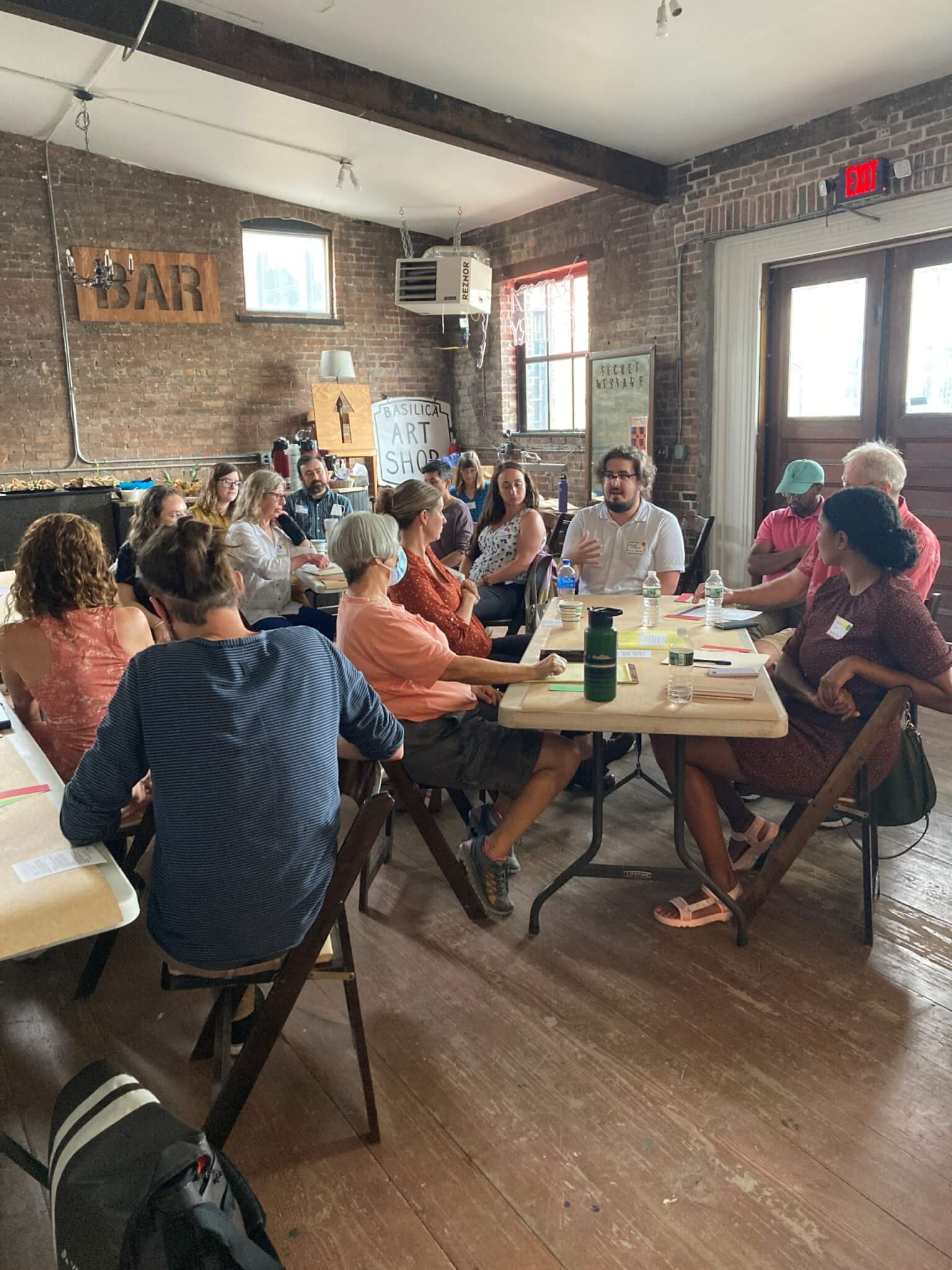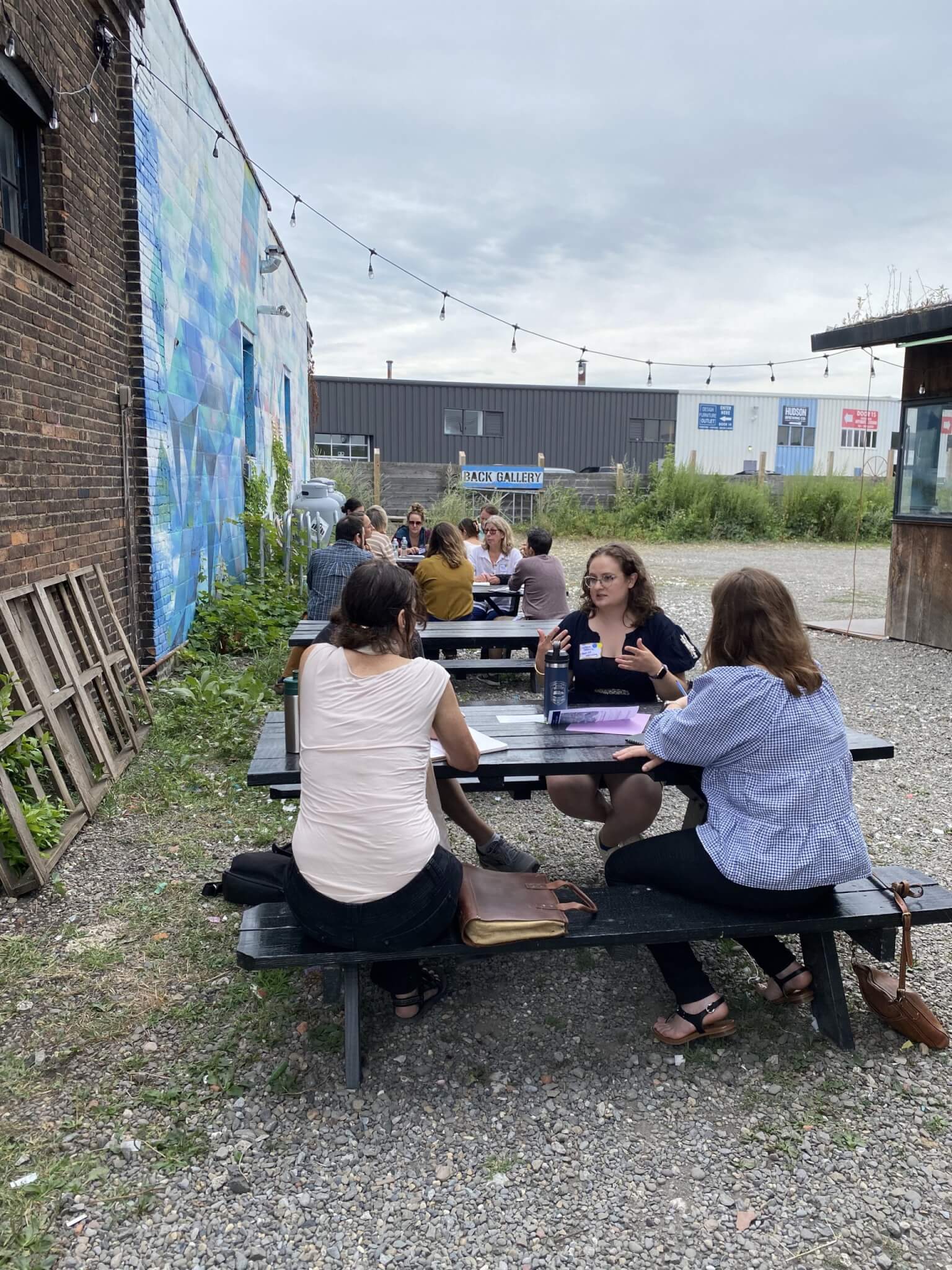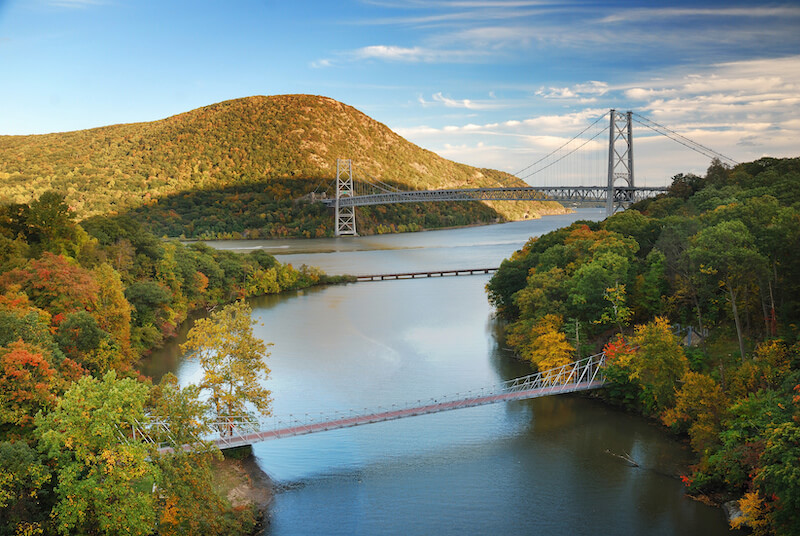Resilience and Connection in the Hudson River Valley
In our just-released 2023 Impact Report, you’ll meet the Hudson Valley Flood Resilience Network (FRN), a network of municipalities that addresses flooding, co-facilitated by longtime River Network member Hudson River Watershed Alliance (HRWA). FRN and HRWA’s work intersects with each of River Network’s focus areas in unique ways. This relationship though, has its headwaters in River Network’s foundational organizational support of FRN’s five-year strategic roadmap, a year-long relationship culminating in a complete roadmap.
We knew bringing the FRN together was a good idea, but needed help understanding how we could grow and defining our program priorities and niche to be sustainable. In New York State we get really focused on what’s happening here, so we were excited to work with River Network because of the national purview; they connected us with national and regional flood resilience networks.”
-Emily Vail, Executive Director, Hudson River Watershed Alliance
Photo courtesy Jessica Kuonen.

River Network makes connections like these all across the country. We’re honored and thrilled to share the story of this collaboration, thanks to interviews with HRWA Executive Director Emily Vail, both in the Impact Report and below, as just one example of the way River Network makes a difference, knowing that water, justice, and river advocates across the country have similar stories to share.
Planning for Impact
River Network’s Resilient Communities Manager, Hannah Mico, had the privilege to support HRWA and FRN with their planning efforts. As she first began work with FRN on their roadmap, Hannah and the planning team started with the basics, establishing who and what makes up the current Flood Resilience Network, and visioning what kind of transformations would be beneficial for everyone involved. “Hannah’s questions brought up solutions to problems we couldn’t articulate,” shared Vail. One solution was implementing a working group, or shared leadership model, aiming to get everyone into right relationship. “This was a lightbulb moment,” said Vail. “Specific working groups, including communications, science and data, and others can lead their own pieces, reporting back to the broader Network on their expertise.”

Photo courtesy Emily Vail.
Through multiple stakeholder meetings, both virtual and in-person, Hannah used strategic prompts to get at both questions and answers. “These conversations led to bigger discussions too, and we ultimately expanded who participates in the network,” Vail described, pointing to the benefits of pulling back and starting with a plan and a strong foundation.
Hannah reflects: “Much of the success in this planning effort came from FRN having a strong Steering Committee in place; this group, with the addition of some key stakeholders, served as a strategic planning team and helped direct many decisions, as well as connected me to other critical stakeholder groups while gathering information for the roadmap.”
With this foundation in place, FRN was ready to get to work. Their efforts, and those of HRWA itself, intersect with each of River Network’s focus areas: topics that define the network’s impact working collectively over time, frame our work, and represent the future for people and nature we envision and are helping to create.
Safe, Affordable Drinking Water
Within FRN’s five-year roadmap was a commitment to provide targeted technical training for its members. River Network staff suggested and provided a State Revolving Fund (SRF) training, ensuring all FRN members had shared language around this important funding tool. This also opened opportunities around New York State’s Environmental Bond Act: when FRN connected with New York State representatives at their listening sessions, members were prepared for the complex conversations. “It was exciting to have these deep conversations with [state representatives] and provide them with feedback on community needs on funding to connect projects related to flood resilience, wastewater, and climate resilience,” shared Vail.
Climate-Resilient Communities
The Hudson River Valley experiences multiple types of flooding challenges as a coastal watershed: tidal flooding, storm surge flooding, stormwater flooding, and traditional riverine flooding. FRN’s five-year roadmap is now opening doors to shape flood resilience in the watershed. In the implementation phase since May 2023, FRN has been using the roadmap to get members and partners involved and applying for funding to support their flood resilience work.
Many stakeholder conversations during the roadmapping process revealed highly variable climate concerns: not only were municipalities concerned about flood events and immediate relief, but proactive flood mitigation efforts, long-term impacts to housing and transportation, and understanding the burdens placed on differently resourced communities throughout the valley. Additionally, many conversations centered around communication infrastructure and building more responsive communications tools. All of these concerns were included in the five-year workplan, and centered as places where FRN can lean into deeper programming and support roles.
Vail shared that, “The roadmap has been a great conduit to apply for implementation funding. Having such a strong, member-developed plan is such an important tool.” Of the many opportunities in the current federal funding landscape, FRN is applying for NOAA’s Climate Resilience Regional Challenge, thanks in part to national connections made through River Network, including the Association of State Floodplain Managers.
Healthy, Resilient Rivers
For HRWA, watershed planning is a key element of their work, starting with watershed characterizations, and using guidance from New York State. They lean on best practices from River Network resources as they create guidance and templates so their members can do this work, too. River Network has helped connect the dots on community engagement in planning processes, including being in right relationship, lifting up local knowledge and information (resident photos, community science, city plans, and more) and supporting communities through inclusive planning processes. HRWA brought a strong foundation of technical partners; River Network helped them align that existing expertise for longer-term impact and identify gaps in network programming that could be strengthened with additional partner engagement.

Hudson River valley in Autumn.
Spreading Strength
Hudson Valley Flood Resilience Network and Hudson River Watershed Alliance also have their own regional memberships, which look to them for organizational and leadership training, much like River Network’s members on the national scale.
[At HRWA,] we don’t have time and expertise as a staff of one to provide everything our members need, we rely [on River Network staff] to bring their expertise for approach and implementation.”
-Emily Vail, Executive Director, Hudson River Watershed Alliance
Through River Network, and our Online Community, they have been able to connect with other people and groups in similar situations. Now, they’re sharing learning and bringing in solutions from other regions. “I found conference presenters through River Network, including New York State connections I wouldn’t otherwise have made… it’s so important to feel like we’re part of a larger network,” shared Vail.
Another key takeaway Emily shared with us was around the importance of talking with their membership and the communities they work in. “We had positioned ourselves as a science support organization, but through our Watershed Needs Assessment we learned groups felt confident there. What they really needed was support in organizational structure, communications, and other foundational items like opening a bank account.” Following this collaboration, we’re now exploring how we can provide similar services to FRN members, spreading the learnings and organizational strength another level further.




